Here are some quick reviews of all the games I’ve been playing lately. I will periodically move these titles down to the full A-Z list found HERE. I am using the following Board Game Geek rating guide to give these a score on how much *I* like these games, but all this is just, like, my opinion, man:
- 10 – Outstanding – will always enjoy playing.
- 9 – Excellent – very much enjoy playing.
- 8 – Very good – enjoy playing and would suggest it.
- 7 – Good – usually willing to play.
- 6 – Ok – will play if in the mood.
- 5 – Mediocre – take it or leave it.
- 4 – Not so good – but could play again.
- 3 – Bad – likely won’t play this again.
- 2 – Very bad – won’t play ever again.
- 1 – Awful – defies game description.
With that in mind, here are the most recent games I’ve reviewed!
Adult Games
- Advanced Squad Leader (10) – The rulebook is over 200 pages of DENSE acronym-filled, 6 point font verbiage, the pieces are so small you need tweezers to move them, and the graphics haven’t been updated since the 80s–and yet it still falls firmly on the “really fun” side of the line between great game and complete waste of your life. The rulebook (of which you probably only really need 100 pages) is actually pretty manageable due to an excellent index, and whether or not a tactical conflict simulation with no fog of war is an accurate simulation aside, this game more than any other makes you feel like you are actually on the battlefield. Plenty of downtime for rule look-ups, but once you get competent, the system, the THOUSANDS of actual historical scenarios, and the tactical combined arms maneuvering really can’t be matched by any other game.

- Amazonas (8) – This is a clever, simple game of capturing various villages on the map in order to give you gold to spread out and add more villages to your network. Nothing to make it really stand out, but it’s a tight, fun game that is full of nice decision making points.

- Android: Infiltration (8) – Make your way through rooms (represented by a line of cards) in a cyberpunk corporate facility, downloading zetabytes of information and stealing/destroying everything you find in this very flavorful heist game. There are a lot of bells and whistles, but the main choice is when to turn around and head back to the entrance as anyone still inside when the threat dial maxes out will be out of the game. Like most games of this type, it’s pretty random when you need to leave if you try to push it, so more often than not you will find yourself with no hope of escape due to an unlucky card. Still a lot of fun, but it’s not exactly the tightest game.

- Ankh’or (7.5) – Collect Splendor style discs to buy octagonal tiles to arrange in a grid in the most points-beneficial way. This all works very well, with good shifting choices in what you can buy, however, despite great components and a ton of scoring choices (some not explained super well in the rule book), this doesn’t really feel like it would have the legs to see regular play.

- Bites (7.5) – Simple game of moving colored ants ahead to collect the food of their color for yourself. Ultra simple, but full of good choices (the ant that finishes first will have the food worth the most, so you have have to trade off collecting the food you need vs making sure the ant you want finishes first. Absolutely stellar components (double layer food tiles look fantastic), but the gameplay was just a little too simple for my tastes.
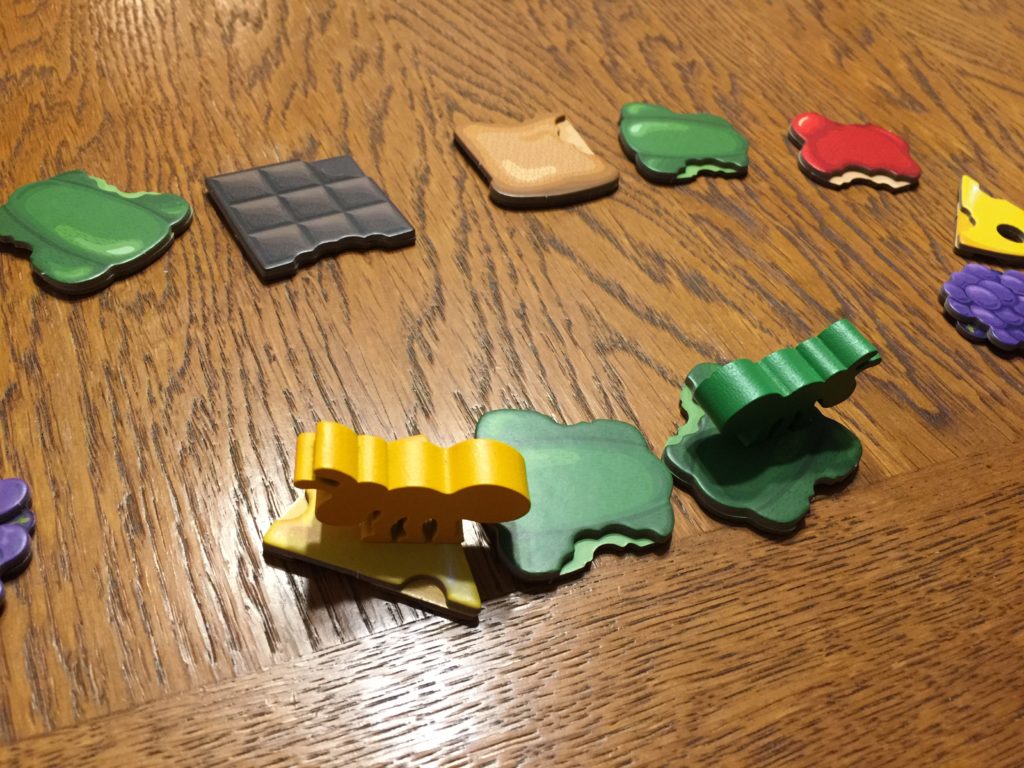
- Bongo Kongo (7) – Pretty decent Loupin’ Louie spinoff where you try to hit food out of a big monkey’s backpack before he can turn around and hit you with his club. The big monkey swings around surprisingly quickly, which is appreciated, but, like a lot of these games, the mechanism for knocking food into your tray is pretty imprecise which can lead to some frustration.

- Boss Monster: The Dungeon Building Card Game (5.5) – On paper this is a great idea, and the retro artwork is very cool. Unfortunately having the (very few) scoring cards come up randomly each turn, AFTER you’ve already built your rooms, means that the winner is usually whoever gets the most lucky flips in their areas of specialty. Full of promise, but not there for me.
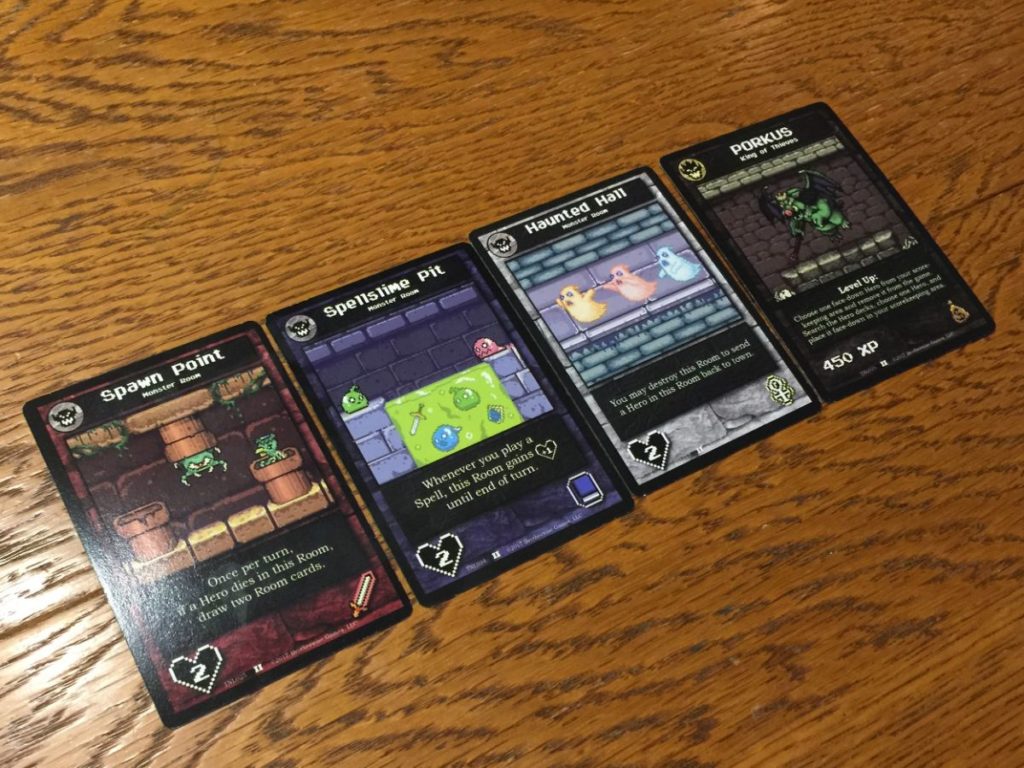
- Brass Balls & Nerves of Steel (6) – A half-cocked cock and balls joke strapped on to a half cocked-game of rolling your balls into your opponent’s holes, this is a decent pastime, but there are plenty of other better dexterity games. The big ol’ balls have a nice heft to them though.

- Buffy the Vampire Slayer: The Game (8) – Considering its age, this is surprisingly fun (and a good implementation of theme for fans of the show). It shows its age with the dice movement and random combats, but you will be shocked to find out it is actually 20 years old, not 15!
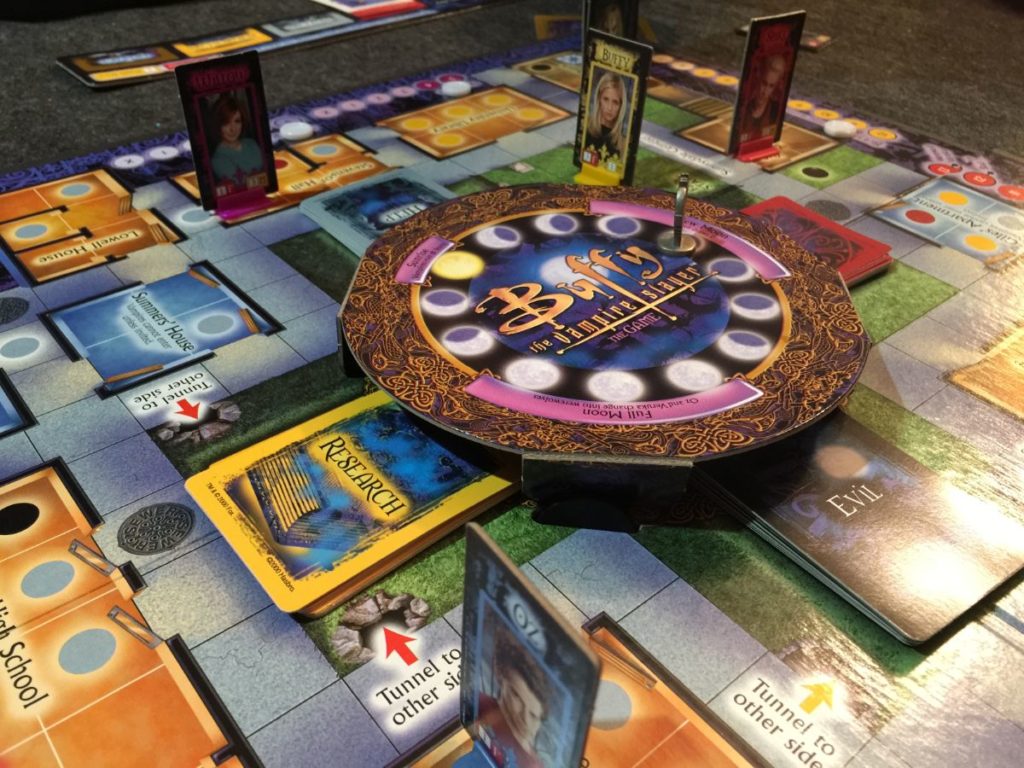
- Bunny Kingdom (8.5) – A game of collecting the most areas of various types to get points, along with a ton of bells and whistles as you draft the cards to get you points. Fairly chaotic with all the scoring options and cluttered board, but it is fun to play and looks great!

- Call to Adventure (7.5) – Similar to Splendor, you draft cards, that give you more resources (or, in this case, 2-sided runes to cast), to get you better cards, etc. In theory, this is also supposed to construct a story for your character, but in the end all the choices, dark or light, feel pretty inconsequential as you mostly just care about how many icons and points you collect. Still, it’s pretty short and the art looks fantastic!

- Cardline: Marvel (9) – If ever there was a good use of the Cardline system, it is in putting superheros in order of who is the strongest. No comic company has ever solved the riddle of actually figuring out an objective ranking system for their heroes, but honestly most of these felt close enough to me, so I’m calling this one a success.

- Cockroach Poker: Royal (8.5) – Part of the appeal of Cockroach Poker is its ultra simplicity as a game of pure bluff. I’m not convinced that adding in a new “is this a ROYAL cockroach, or a regular” choice adds anything to the game. Still a fantastic game, but I’d just as soon play the original.

- Coin Age (6.5) – Simple area control game in theory designed to be carried in a wallet and played with coins. Unfortunately, it is not good enough to be an “every day carry” and no one carries coins on them anymore anyway.

- Dead of Winter (8) – Very thematic (and BLEAK) zombie game where you scramble around to various locations searching for items before the zombies get to strong. The “Crossroads” system of drawing a card each turn with a choice that has a gameplay effect works ok, but the effects are pretty minimal and felt kind of tacked on to me. My biggest complaint however is that the traitor mechanic (as with most traitor games) doesn’t really work. It is usually VERY obvious who the traitor is the first time they act against the others, and once found out it becomes basically impossible for them to win. A fun game, but not the masterpiece some claim it to be.

- Dungeon! (5.5) – Ok dungeon crawl where you go into rooms trying to beat their guardians to collect treasure. Some characters are better in different rooms, and each has to collect a different treasure total that makes it all kind of come out in a wash. By the end game there are a few decent blocking choices, but the battles and card drawing is so random that I don’t think I’d recommend this to anyone over the hundreds of better dungeon games now out there.

- Dungeonquest 3rd Edition (8) – I complain about some games being too random, and then there is Dungeonquest, the most random of them all–and somehow also one of the better ones. As long as you make peace with the fact that you will probably, certainly die well before the game end, it’s actually kind of fun seeing how far you can get by drawing tiles heading to the center of the dungeon. A few house rules will make this better though: get rid of one-turn kill cards like Swinging Blade (dying halfway into a dungeon is one thing, dying on the very first turn is another), scrap the combat cards (it’s a fun system, but WAY bogs the game down–use a variant that switches combat so a few dice rolls instead), and require a treasure from the center to win (not that anyone ever will, but it will prevent chickenshit running away after the first 4 turns).

- Flag Dash (8.5) – Clever programmed movement capture the flag game, where you secretly select a couple of moves for your flag dashers, and hope they end up where they need to be after everyone has moved. It isn’t perfect, once you get a flag it’s usually pretty easy to win, and 2-3 player is a little awkward, but as far as super cheap programming games go, this is recommended.

- Forbidden Desert (8) – These Forbidden” games all take the basic Pandemic engine (use actions to explore tiles and perform tasks to keep them explorable while you search for items) with minor twists. They also all do a good job of feeling unique in their own right, and this one’s water meter and shifting sandstorm tiles is pretty cool. Add in the fantastic components for the price and you have another cooperative winner.

- Game of Thrones (8) – Definitely a great implementation of a “dudes on a map” game to the Game of Thrones universe. There is a fair amount of chrome, but it all works easy enough once you get going. I wish that it had a little more of a Diplomacy style guarantee for alliances before battles are resolved, as otherwise there aren’t a lot of surprises about who will support you. Also, the end game definitely has a lot of pile on the leader until someone manages to sneak ahead to the win.

- Go Away Monster! (5) – Not a game meant for adults, this is designed to play with 2-year-olds to teach them to take turns. That said, you could make an ok game by allowing adults to feel around for the pieces they need in the bag (while under a time limit). Still, no adult with a child would EVER play this without the child (due to being fucking sick of it).
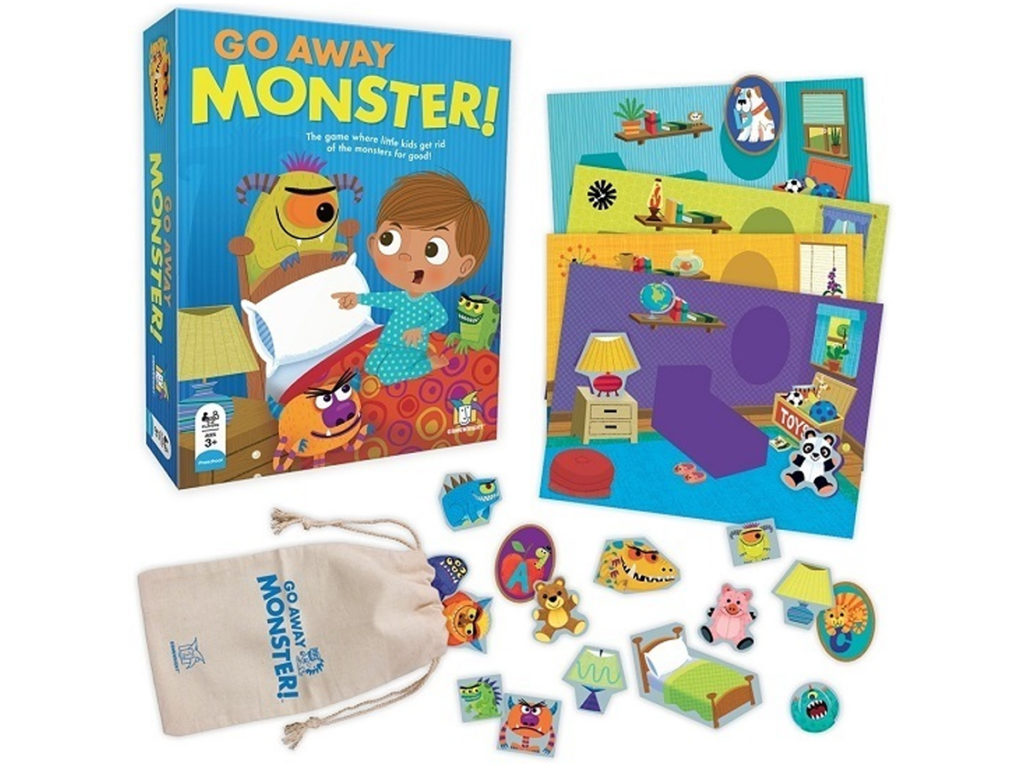
- Indian Summer (7.5) – Another “play Tetris shapes on a board” game, this one expands upon the very basic Patchwork by include a ton of scoring complexity. It’s definitely a good time, but I’m not sure all the extra scoring hoops make for a better game.

- Iquazu (7) – This is a fairly abstract (despite the production design) game of slowly building up color majorities and deciding between immediate points or long term investments. It works well, but was a little too dry for my tastes.
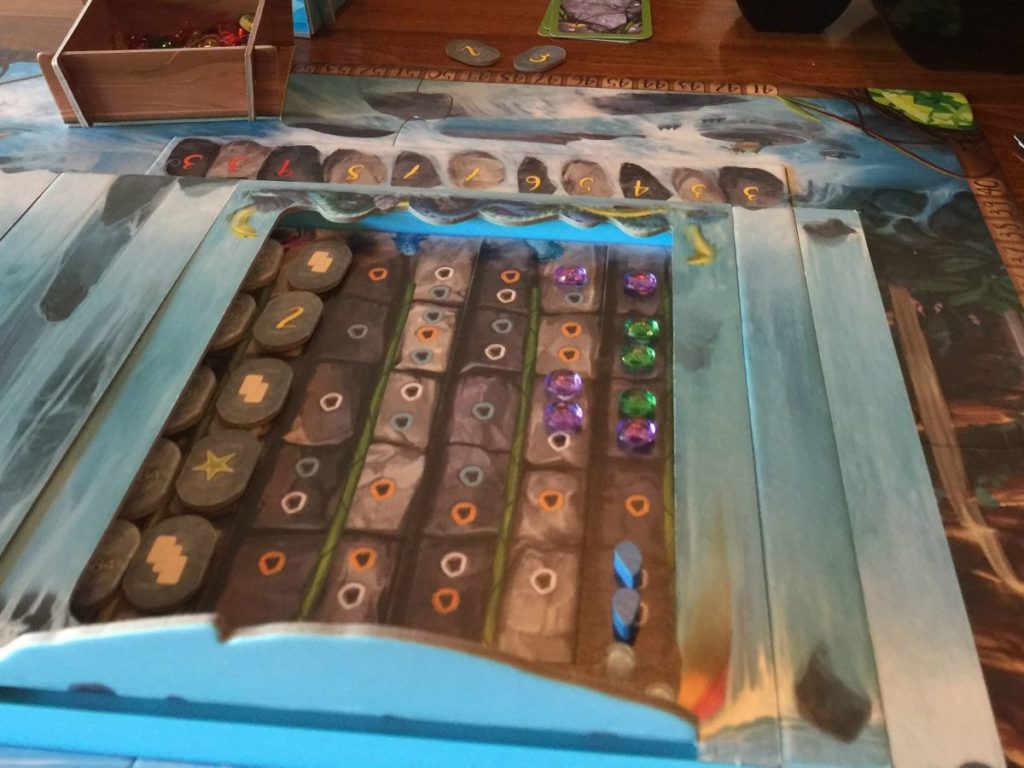
- Jab (8) – This unique real time boxing game involves putting down various cards on your opponent’s body while countering (matching color or type) cards they play on your body. There are a few twists and patterns to look for, but it actually ends up working well and even feeling pretty thematic. Like most games of this type, repeated play would definitely improve the game, and, like most games of this type, I’m not sure I really want to invest the plays needed to get proficient, but I respect the design.
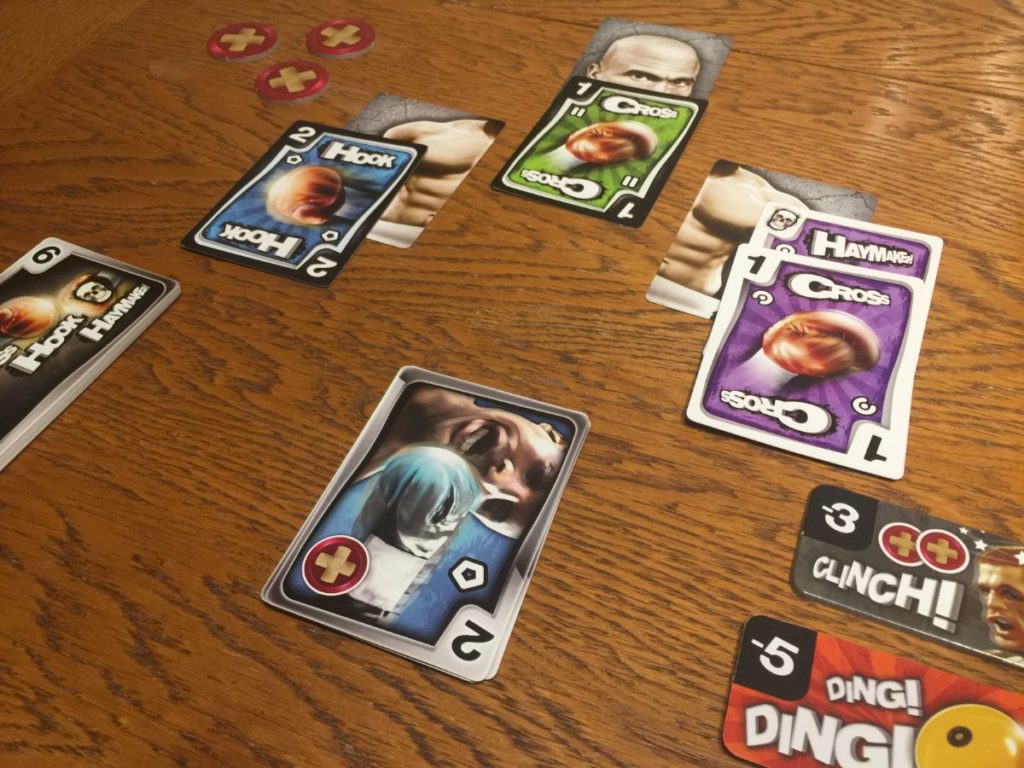
- K2 (7.5) – A nicely evocative mountain climbing game where you cycle through a deck of cards hoping to play them in the most efficient order to work your way up a mountain while avoiding the worst weather. Works pretty well, though it’s definitely easy to get screwed over if you mis-play a round or two.

- King of Tokyo (8) – Yahtzee style dice game where you choose between collecting points (to win), energy (to buy cards), or attacking/healing (to win by being last one standing). It’s good, simple, and fast, though the power up cards feel a little random/inconsequential most of the time. I wouldn’t play with too many as player elimination will be annoying, but otherwise, this is a dice rolling staple for a reason.
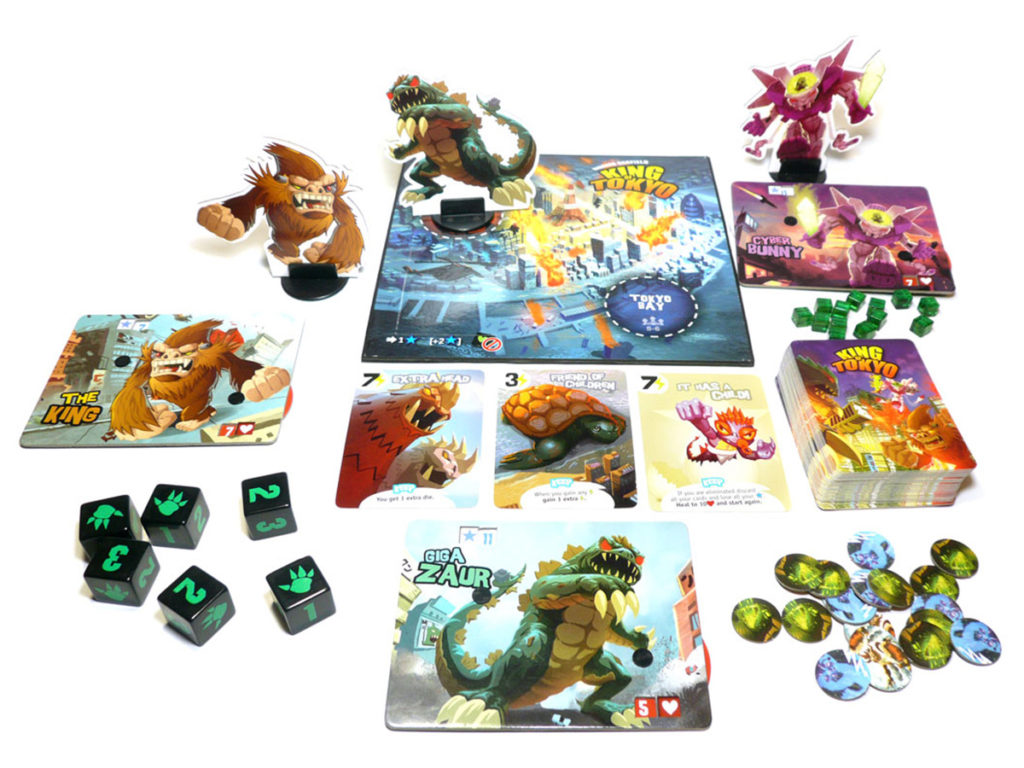
- Kingsburg (8) – Cool dice game of assigning your dice in groups to match numbers that give resources/points all while slowly building up your own player board to help your future dice rolls. Nothing that you haven’t seen before, but good production value and a ton of included expansions should keep it hitting the table.
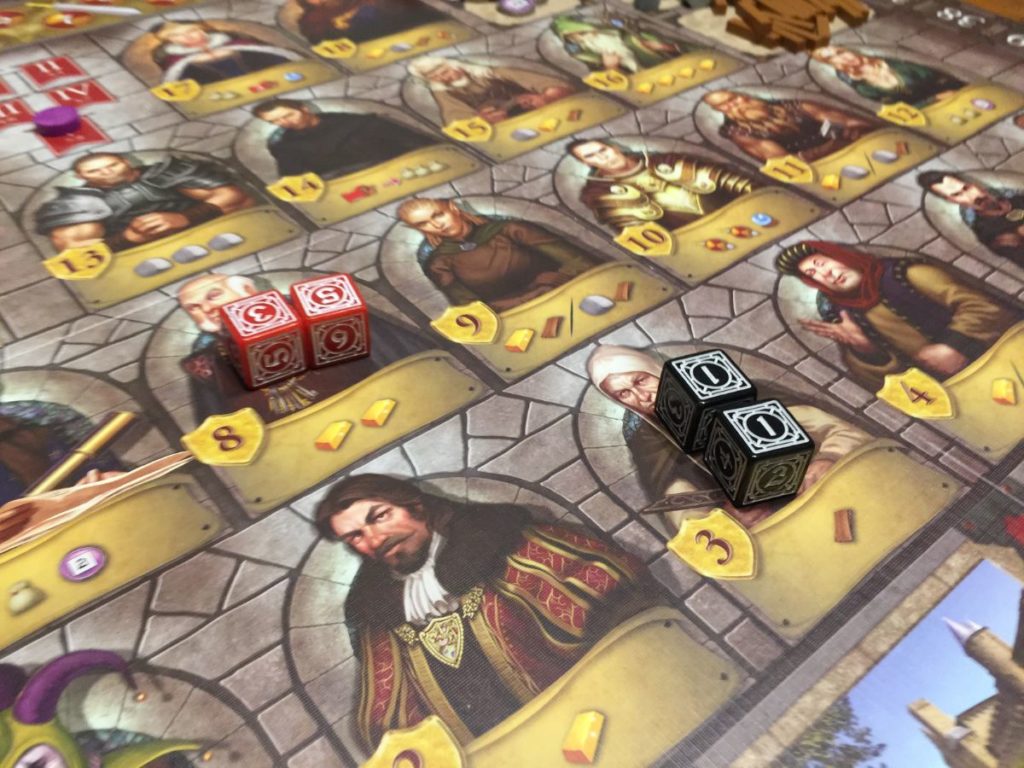
- Krosmaster: Blast (8) – Krosmaster: Arena is one of my all time favorites, so this was a bit of a disappointment. Ostensibly, this is a shorter game that is not about wiping out the other team, but rather controlling board elements while trying to avoid getting knocked out. In practice, I have NEVER seen a glyph victory as the smaller boards and high damage output makes the “kill half their team” victory condition the only one that really matters. The game itself is fun, and some of the simplifications from Arena are good ideas, but others (ultra punishing lock rules, much swingier (and more common) critical hits, lack of player engagement with no more opposed rolls, and that stupid stupid Forbidden City board with a central terrain element that is impossible to see over). This is a decent game, but haphazard, unbalanced, and poorly playtested…definitely not an improvement on Krosmaster: Arena, despite Arena’s flaws (overly complicated and unbalanced characters being the primary offenders there).

- L.L.A.M.A. (7) – Simple game of playing cards in order, trying not to get stuck with a handful when someone goes out. There are some decent choices here between pushing your luck or just folding and eating a few points. Still, I’ve played quite a few games of this and don’t really feel the need to play any more.

- Legend of Five Rings RPG (3.5) – This was pretty much a complete failure for me. Admittedly, there were probably some rules issues our group didn’t entirely understand but even so this system seemed to just not work from the outcome. As we understood it, you can pick a stance with which to perform each test, leading to the obvious “well, I guess I’m going to do it in a “sneaky” air way since I have 3 dice in that element” reasoning for every roll. Skills also seemed wonky, with skills for stuff like “gaming” but not “perception” (this complaint could be a holdover from D&D thinking). Worst of all, the central Strife mechanic felt very artificial in play, and essentially only ended up forcing you to stop testing for fear of getting more Strife…and any mechanic that encourages you NOT to do “stuff” in an RPG needs to be cut from the system (to say nothing of characters with the right elements getting massively more strife than others, without any obvious attempt to balance it out).
- Lord of the Rings: Journey to Mordor (8) – Another Yahtzee game, this one with a Middle-earth theme where you try to keep rings without rolling too many orcs and Nazgul. It works pretty well (and the advanced side with special abilities for each location helps (both with gameplay and theme). Nothing to distinguish it from the legion of other games like this, but recommended for the theme.
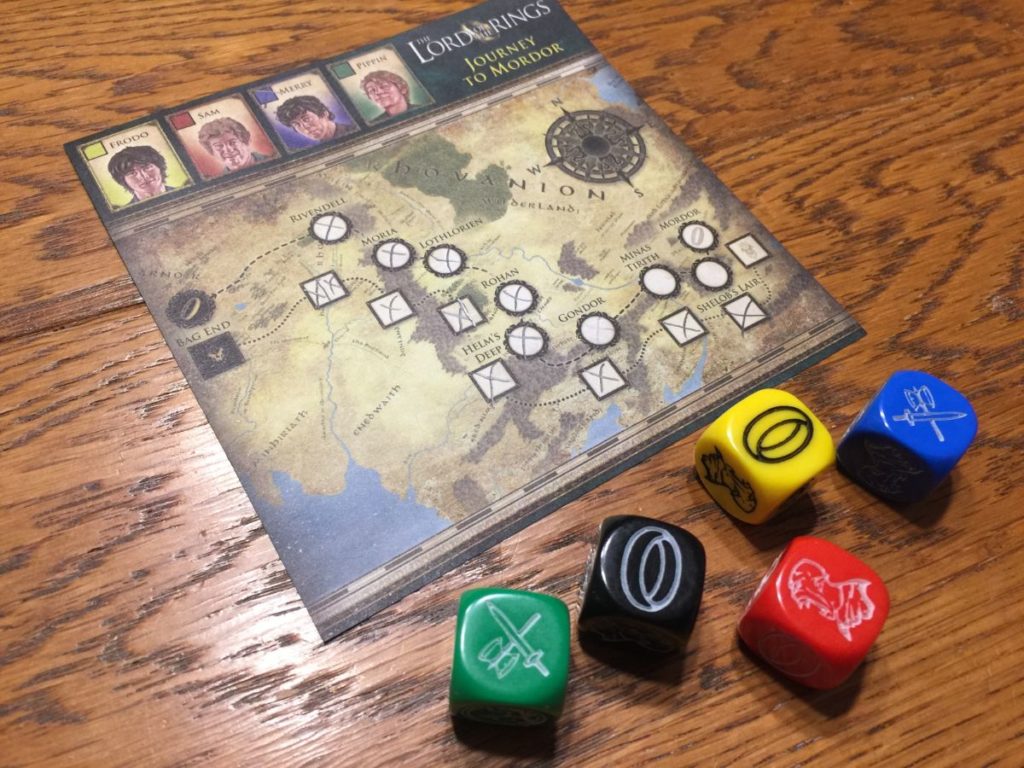
- Mage Wars: Arena (8) – Mage Wars on paper seems like such a cool game. Basically playing Magic with access to your whole deck (in a super cool “spell book”), and the ability to move around a board with your creatures and mage. In play however, it too often will bog down in a giant mass of creatures in the middle, all guarding/trying to break through the deadlock to do that final damage to your Mage. I haven’t played enough to know if this is just due to poor play or a flaw in the game, but even with this problem (and the general overlength), it’s still a pretty fucking cool game.

- Mastermind (7) – Not a bad “game,” as it’s kind of fun to slowly narrow in on the combination of colors your opponent has hidden from you. Still, there’s not much to it, and a few lucky (or unlucky) guesses can wildly swing things.

- Mississippi Queen (8.5) – Another older game that holds up very well, this is a Powerboats style steamship race (with periodic stops to pick up the required passengers) that will inevitably have someone miscalculating and full on crashing into an island at some point. There are probably better options out there (Powerboats for one), but this is still absolutely worth playing!

- The Omega Virus (5) – Not much of a game, you basically just run around a map and hope to have the computer randomly give you the components needed to win. I can see how it would be super cool for an 90s kid…as an adult in 2020 without any nostalgia there just wasn’t much to recommend it.

- Palazzo (6.5) – Fairly dry auction game where you try to build up enough cards to snag the perfect set of auction tiles to build multi level point scoring houses. If you lose a few auctions you’ll have more money for later auctions which was nice at least, but nothing in this one really made me super excited to play again.

- Parade (7) – This is a simple card game works quite well (though I had a hard time wrapping my head around the best strategy) as you try to minimize the number of colors you take (or, at least the numbers in each color) before the game end. The fantastic Alice in Wonderland art helps a lot too.
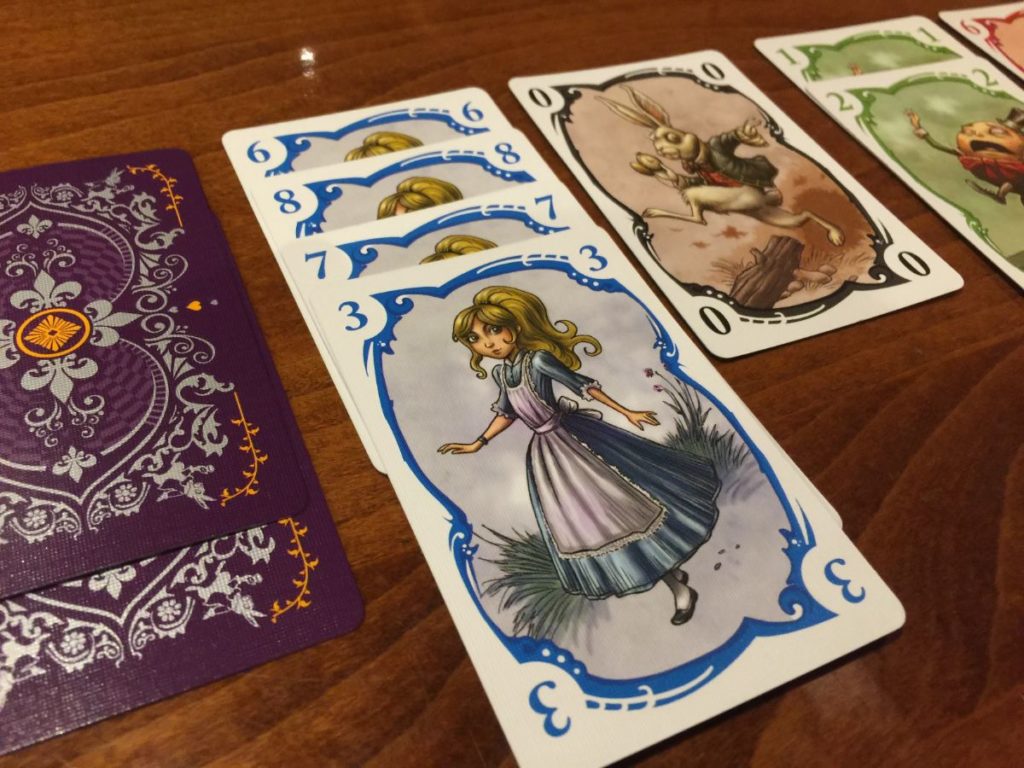
- Pathfinder Adventure Card Game: Skull and Shackles (7) – There is a lot to like here, from the sense of actually developing a character and their associated deck of cards, to the location decks for you to explore, but unfortunately the worst rulebook of all time makes a lot of it very frustrating to play. And, I have a feeling repeated plays won’t reveal a lot of game under all the cool cards and rule ambiguities.

- Photosynthesis (9) – Due to the beautiful trees and the cool sun the moves around the board, this abstract feels anything but as you try to maximize your tree growth (while avoiding the dreaded shadows cast by taller trees). There can be a lot of analysis paralysis as you attempt to look ahead, but nothing too crazy in this cool little puzzle game that feels as unique as it looks.

- Pictionary (6) – Honestly, not a bad game, though with even basic artistic skill, it is usually pretty trivially easy to get someone to guess your picture (or, the phrase is obscure enough it would be hard even with a master artist). Fun enough, but the game mechanics are missing the opportunity for cleverness/drawing stupid shit.

- Planet (9) – Very cool drafting game where you select tiles to put on your planet trying to get the right terrain bordering other terrain in order to attract animals. All animals to attract on future turns are visible, so you can either go for the short term ones, or try to plan ahead for late game points. It is very simple, but the choices are great, and the magnetic tiles on a big 3D globe look amazing. Obviously rated lower if it were just played on a board, but it’s not, so definitely check it out!

- Prophecy (7) – A decent game, with plenty of cool quest options and “build up your character” options in between the abstracted board spaces. Unfortunately, like most of these adventure games, this is just WAY too long (even in the short game), and suffers from the same “if you don’t beat the super hard final challenge, your character will be majorly set back” issues as the rest.

- Puzzle Strike (8) – The graphic design is kind of amateurish, but the game-play in this Dominion clone is actually kind of cool. Instead of cards you have chips (you draw from a bag), and this adds the end condition of melding gems to “crash” into your opponents that actually works pretty well.

- Rhino Hero: Super Battle (9) – This super sizes all the cards from the original game, and makes for a cool multi level tower building game that looks fantastic in play. the climbing dice can make for a swingy win condition, but everything else was super fun here!

- Rivers, Roads, & Rails (3) – The only reason to play this is the beautiful artwork, everything else in this “game” is pretty horrible. You basically just play tiles where you can, until you can’t, and then you wait to draw one you can play again. Repeat until one player finally runs out of tiles (and there are many to go through). Also, no table on earth is big enough to hold the final game unless there is major player cooperation to turn it away from the table edges at every chance.
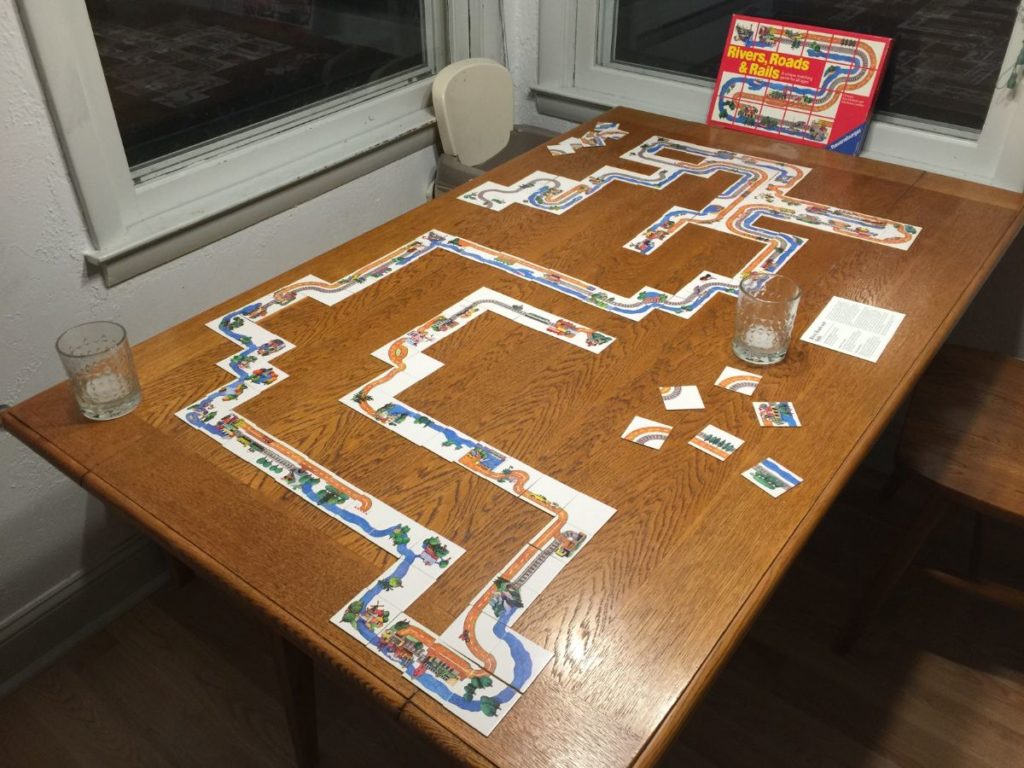
- Rivet Wars: Eastern Front (7) – The cute little peg like army men are adorable, and this looks fantastic all set up on the table, but the game suffers a bit from an attrition win condition where you have to send a continuous stream of guys to the front lines until one person wipes out enough to overwhelm the unluckier player. Still good fun to be had, but I’m not sure the perfect balance of map size and units (all of whom have a paper rock scissors effect against each other) to create the best scenario without it becoming a slow attritional slog until one side rolls enough 5s and 6s to win.

- Robber Knights (7) – Basic abstract game of sending pieces out across a map, trying to end up with your color on top of any point scoring towns/villages/castles. Fun enough to build a map and try to protect your high point scoring tiles, but it’s still awfully dry.

- Rumis (7) – When I first saw this game, I was hoping it would be a little more puzzley than it is. Placement is still key as you try to get as much of your color showing as possible by the end of the game. In practice, the early rounds don’t matter a whole lot as long as you make sure to keep a few routes open for final round placement. A fun tactile game, but never seems as interesting as I think it will be.

- RYU (5) – This game of grabbing cubes and using the to complete your dragon board was a major miss as I basically spent the whole game running between two tiles slowly building up enough cubes to win. I’m sure there is probably a bit more to it than that, but as it was, I didn’t see anything here that made me want to play again to find out.

- Seasons (9) – Cool game of rolling chunky dice to collect resources that will become worth more and less as you circle a season board. Add on a bunch of special power cards and there ends up being a lot of room for cool combos. Almost a few too many moving parts, but once you get playing it moves along very smoothly.

- Sherlook (6) – A simple spot the differences race, with the first player to pick the correct number winning. A little confusing at times as some are differences, and some are missing items, but easy enough overall.

- Silver & Gold (9) – Use dry erase markers to slowly fill in drawn squares on your drafted Islands. Finish Islands quickly enough (and cover enough special squares) and you will collect enough points to win. Grabbing (usually through luck of the draw) big numbers seemed the best way to win, but other routes to points seemed viable as well.

- Song of Ice & Fire: Tabletop Miniatures Game (8) – Pretty decent mini game, with a couple of cool ideas (especially in how non combat leaders are used). Rectangular trays allow for more interesting movement options than other skirmish miniature games, but without some work painting them up, they sure don’t look as good on the table.

- Soviet Kitchen Unleashed (8) – Worth playing for the novelty of the color mixing app alone, this is a really cool system of holding cards over your phone to mix their colors together to get the closest approximation of the color on the screen. The twist is you can’t show players your cards, so there is lots of “Ok, I’ve got a dark green…” “I’ve got a light neon green…maybe we mix them together and we can kind of get a normal green?” I can see the rating going down drastically with a lot of plays, but tons of fun at first!

- Stuffed Fables (7) – The storybook is verycool, the minis are great, and it does seem like some work was put into telling a cool story. Unfortunately, with what is essentially a book of 50 some scenarios, it really seems like very few of them would be interesting enough for a replay. Maybe this is because I only played through the beginning campaign, but they were mostly trivially easy to finish. I hear they get much harder later on, but that doesn’t seem like it would make the game any more fun (despite the dice pull mechanism being well implemented).

Tales and Games: The Pied Piper (7.5) – This is a simple “take that” game where you try to get rats to run through other player’s houses (and the Pied Piper to run through your house to clear out rats). Normally I don’t like take that style games, but this adds a welcome timing layer to move everyone that creates some good decision making in your attempts to lob rats at your opponents. Luck is fairly high, and it does include player elimination for groups of 4+, but it’s quick enough I’d forgive both of those complaints.
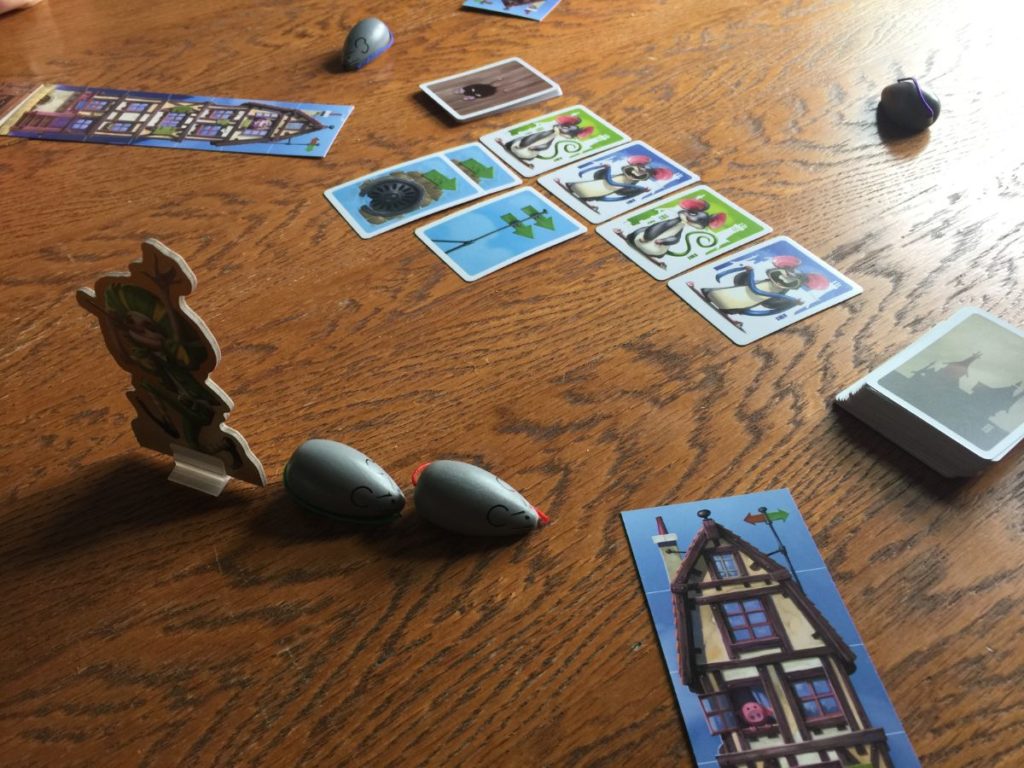
Tambuzi (7) – Electronic musical chairs game, this is honestly pretty slick as you move around variously kicking animals out of houses or jumping onto a welcome mat in front of the house. Like all games like this, the central mechanic of “finish your turn as quickly as possible” isn’t really all that fun, but this looks good and finishes quickly, so you won’t really mind.

Thunderstone (8) – Dominion, except with a rotating dungeon of monsters to collect as VP instead of buying provinces, and it mostly works pretty well. The theme is massively better, but the game itself is a lot messier and less prone to deck tuning and slick combos. That’s a trade-off I’m probably ok with, but Dominion is probably still the better game.

Treasure Hunter (8.5) – Underrated drafting game where you draft different valued cards in 3 different colors to try to either get the most of the least total value to win the best treasures each turn. There are maybe one too many extra bits added to the game in the name of adding interest to a simple drafting game, but it all works very well and always produces a “oh yeah, this is actually a pretty good game” reaction when I play it.

Ugah Ugah! (8) – This looks like just a simple kids game, and it is, but it’s also a decent Yahtzee variation that feels just different enough from the pack to warrant digging out every now and then. I like the way the dice help the pieces work their way around a circular track of tiles worth various points. Again, nothing groundbreaking, but better than the small Haba box would suggest.

Werewords (9) – Clever app based game that is more 20 Questions than actual Werewolf, but the Werewolf/seer traitor mechanic stuff is well implemented. You definitely have to be careful steering the questions too much if you don’t want to be found out, but with a bit of practice I could see this one being a stayer!
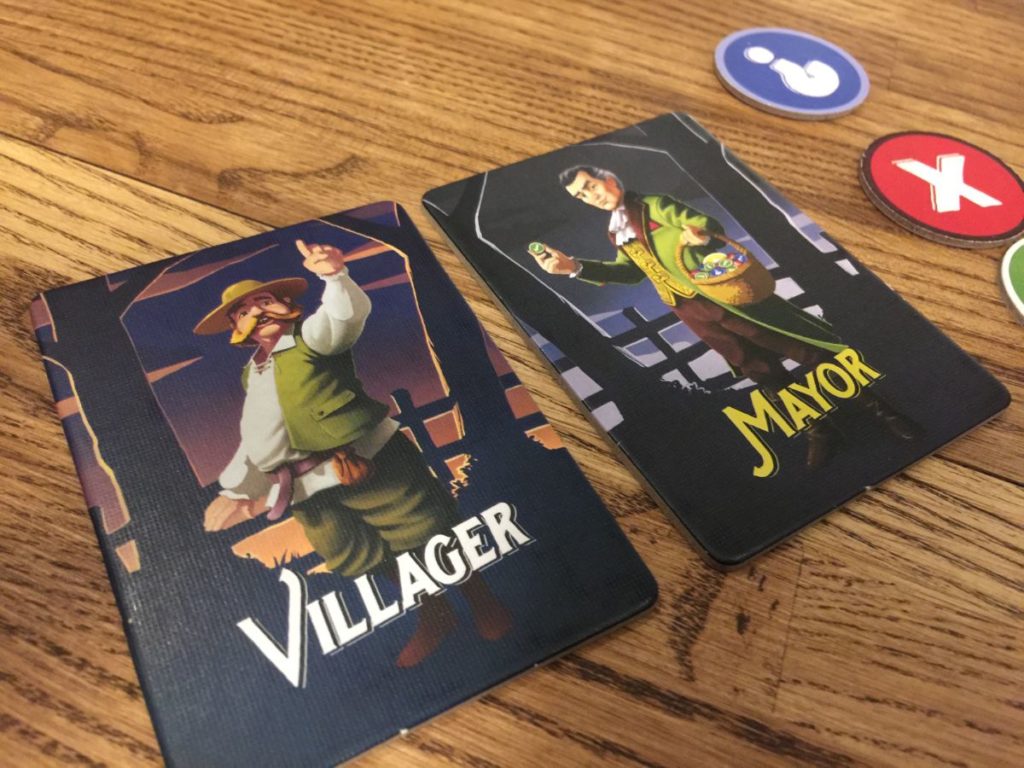
Children’s Games
- Go Away Monster! (2+) – Fantastic game for kids about as young as you can go that teaches taking your turn, organizing pieces on a board, and the joys of random monster surprises. Even for adults, the “don’t draw the monster” element is kind of fun.
- Mastermind (6+) – Not really that great for kids, mostly because some of the subtleties of the black and white pegs are a little confusing. But, if a kid has the motivation it could all probably work pretty well with a bit of practice.
- Pictionary (4+) – Adults will have to handicap themselves pretty well with this, but you can do all kinds of variants with very young kids (even just letting them guess what the picture is)…though most variants won’t need an actual game of this to play.
- Tales and Games: The Pied Piper (5+) – Easy enough for kids, though this is a real game, so probably don’t want to go too young on this one.
- Rhino Hero: Super Battle (4+) – Supposedly this has been banned because kids were getting hurt standing on chairs to finish their towers. Not sure that’s true, but the big cards should be pretty easy (easier than the base game) for even very young kids to place. Whether than can handle the swings of the climb die emotionally is another story though.
- Rivers, Roads, & Rails (3+) – It will take some tweaking (mostly you probably want to remove like 2/3rds of the pieces (otherwise this goes way too long), but even very young kids will have fun matching up their pieces and looking at the cool art.
- Rumis (4+) – You could probably understand this pretty young, but the strategy for cutting off the board will be lost on the youngest kids. Played non competitively I could see kids having fun here.
- Sherlook (5+) – Not really a great kids game, the differences are king of hard to spot, and it can be frustrating to never get the right number turn after turn. Also there’s a big dead body outline in the center of each picture.
- Stuffed Fables (7+) – For older kids this could be good, though I’ve found lackluster central games like this haven’t managed to maintain interest.
- Tales and Games: The Pied Piper (5+) – Even though this is theoretically a “take that” game (a style I’d usually steer away from with kids), the theme of pushing a horde of rats in different directions around the table is evocative enough that I think most kids wouldn’t get too frustrated with a string of nasty plays. There is a fair amount of thinking ahead (hamstrung by luck of the draw), so I wouldn’t go too young on this one.
- Tambuzi (4+) – Real-time games aren’t the best for young kids, but as long as your kid can handle some frantic urgency as the music counts down, there is fun to be had here.
- Ugah Ugah (5+) – Highly recommended for when your child can handle a Yahtzee style game…mostly because this one is actually fun for adults too.
Expansions
- Chronicles of Crime: Welcome to Redview – Ostensibly a Children’s version of Chronicles of Crime, but the missions still feel rather adult (drug references, domestic abuse, scary-ass monsters). Overall, it works fine for older kids, but it didn’t seem all that different from the base game.
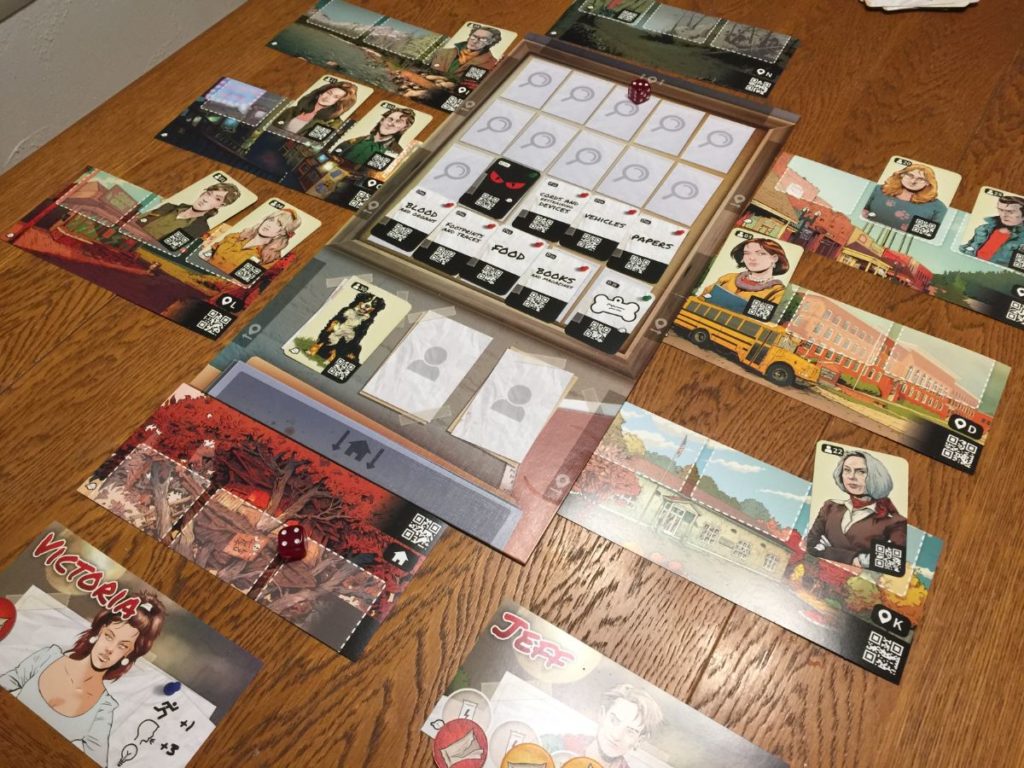
- Krosmaster: Arena – Minecart Map – This is a fun map full of LoS blocking carts that can be pushed to the next stop for one AP. There is a fair amount of rule complexity with how they push other Krosmasters, but once understood, can lead to a lot of clever play opportunities.

- Krosmaster: Arena – Plantation Map – The only special rule for this map is the ability to choose for yourself which spaces half the trees and bushes will go. Ultimately this is a fairly minor choice (aside from obvious LoS choices if you are a ranged or melee focused team) since once the first turn is over, the Krosmasters will always adapt to the board anyway.

- Krosmaster: Arena – Stalls Map – The rule twist here is that the stalls from the 2.0 base set can now be moved within the dirt area. This has cool mobile cover uses and is just about the right level of complexity I like to see on a new Krosmaster map.



Leave A Reply